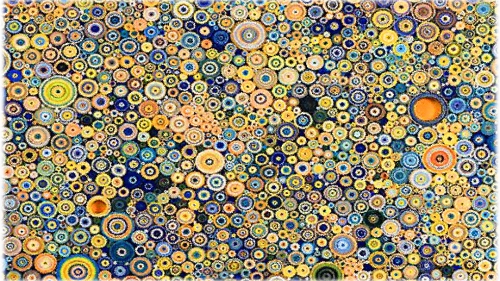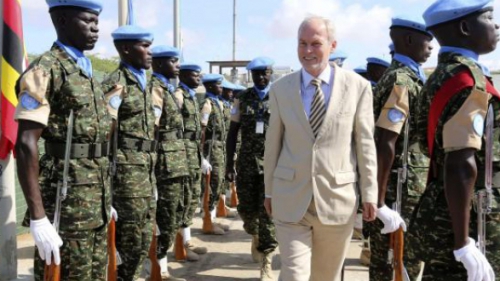Somalia Analysis Part I: American News Media Fantasies
A team of journalists from NBC's Dateline recently paid a visit to a corner of Somalia. Their mission was to discover what had become of a country abandoned to civil war in 1995 by the international community and the world media. The result of their expedition and in-depth analysis was disappointing, as it gave an inaccurate and almost Hollywood interpretation of the current state of affairs.
It seems clan violence in Somalia is best understood by the western media in terms of the Hollywood movie "The Road Warrior." A few statistics and video vignettes, plus the testimony of a pair of nervous aid coordinators (from World Vision) constituted Dateline's update and analysis of the situation. Meanwhile a complex and intricate foreign culture and political situation was dismissed as a kind of Mel Gibson action adventure. In the end, from NBC's point of view, the American public can accurately picture the new Somalia as "a savage and dangerous place where life is valued less than a gallon of gasoline or a vehicle that actually works."
Such a pathetic attempt at journalism might easily be dismissed, were it not so tragic and dangerous to the fragile peace now emerging in much of Somalia. As a beginning attempt to counterbalance some U.S. media biases, we must go through Dateline's thin factual material item by item.
The counterweight of historical evidence, statistics, and learned testimony on Somalia, its people, culture and political history is considerable. This article will be the first of three essays, which sketch a response to Dateline's characterization of Somalia today. These articles will try to represent the facts of the case as accurately and objectively as possible. Subsequent essays will go into more detail about the alternative voices and facts we will be employing, which we think offer a surprisingly hopeful, and certainly more helpful approach to the human dilemma of the Somali people.
Dateline's "Land Without Leaders" episode focused on Bualle, a small village along the Juba river in southern Somalia, one of the most dangerous regions of the nation. Dateline avoided other parts of the country -- except for a very brief visit to the North by airplane -- after they were warned that travel to Mogadishu was very dangerous. Without actually traveling far, their report characterized the entire country as chaotic, where travel was impossible because "roads, or what passes for roads, are far too dangerous." Clans were said to hold all regions of the country and the arteries that connect them by military force making "road access...impossible."
By contrast, British journalist Richard Dowden recently described Somalia in quite different terms in an article published in the prestigious U.K. monthly The Economist. As subsequently interviewed on the BBC's Network Africa radio show, Dowden described travel and trade in Somalia in the following terms: "You can see things from the south, from way down in the south of Somalia right up in Somaliland (the extreme North). There are goods coming down from Berbera and Bossaso, the ports in the Gulf of Aden which are turning up in Mogadishu, trucks and goods are travelling all over the country...Business, they say, has no clan." Dowden added, "Considering that Somalia hasn't had any government now for eight years and has been abandoned by the International Communities for the past four, five years, it is actually doing very well and a lot better than you might think. In many ways it is doing a lot better than countries that have proper governments, IMF programs and support from the World Bank." This flatly contradicts NBC's claims, and we will return to Dowden's careful analysis later.
Besides travel for business, clear evidence shows that internal refugees have long journeyed successfully from regions in the south like Mogadishu to peaceful urban centers in the Northeast. As long ago as 1993, the New York Times and Washington Post reported the local economic "miracle" of Bossaso in Northern Somalia. Bossaso became an economic boomtown, a coastal oasis where violence could be left behind from early in the period of the Civil War. In three years, it grew from a sparsely populated backwater of colonial and Republican days to a city of 500,000 with an entirely new internally- displaced population. In 1994, the Times described the city in the following terms:
More than a dozen small ships are cleared at the Bossaso port every day. Most of the ships come from the Middle East, taking with them Somalia's main exports, livestock and fish. The ships bring timber, rice and parts for vehicles. Figures from the port authorities say in 1998 Puntland alone exported a total of 14,000 camels, 17,831 heads of cattle, and 500,000 goats. The region also exported fish worth $7.5 million. Further inland, a number of makeshift shops cater for the town's growing population. But most of the trading takes place on the streets, where vendors sell anything, from electronics to bread.
Bossaso, just like other cities in the Northeast, has not only survived, but also exported its prosperity to other parts of Somalia by trade and example. According to a 1999 report by the Secretary General of the U.N. on Somalia, the spread of Northern stability now means "approximately half of Somali territory is peaceful." The Northern regions of Puntland and Somaliland are labeled by the U.N. as clear "zones of recovery" as compared to "zones of transition" and "zones of crisis" in the South of Somalia. The report states:
There is increasing evidence that ordinary Somalis are tired of violence and are pressuring their leaders to opt for peace...Somalis are increasingly taking political initiatives themselves, through regional conferences, often organized by traditional leaders and informal cross-clan contacts. Civil society is beginning to make itself heard.
Far from sustaining an anarchic political situation, Somalia's clan system has been gradually coming together to rebuild the country from the ground up. In our next article we will analyze the specific local stories which Dateline offered to substantiate its "Road Warrior" image of Somalia. These stories have a reality, which needs to be taken seriously. In doing so, we will see how real suffering in the country must be addressed in order to see an end to the country's difficulties, rather than making a cynical mockery of a justly proud country and its people.















